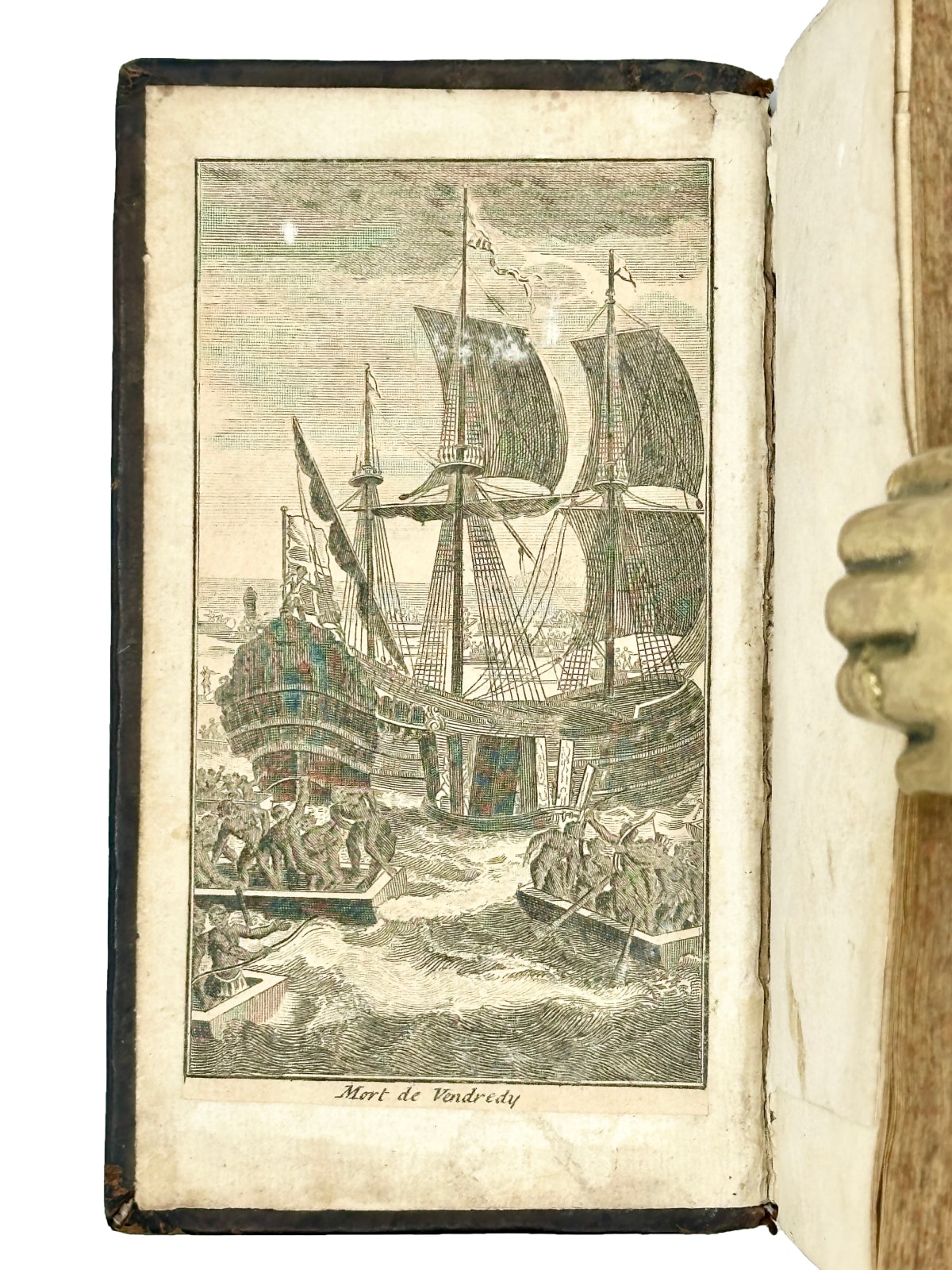







Hennepin, Louis
An important work of Americana, incorporating the first issue of the first map to name Louisiana, this is Hennepin’s first work, which contains the first printed account of La Salle’s exploration of the Illinois country, and the first eye-witness description of Niagara Falls; this is the second edition of the book, however contains the first issue of the map, entitled ‘Carte de la Nouvelle France et de la Louisiane’ showing the Mississippi River not fully extending to the Gulf of Mexico and with a faint dotted line indicating the presumed course of the River, the map was engraved by Roussel and embellished with a cartouche by N. Guerard.
Further images
-
(View a larger image of thumbnail 1
)

-
(View a larger image of thumbnail 2
)

-
(View a larger image of thumbnail 3
)

-
(View a larger image of thumbnail 4
)

-
(View a larger image of thumbnail 5
)

-
(View a larger image of thumbnail 6
)

-
(View a larger image of thumbnail 7
)

-
(View a larger image of thumbnail 8
)

12mo, (156 x 89 mm). 6 ff., 312, 107 pp., folding map (480 x 310 mm). Contemporary calf, raised bands to spine, compartments tooled in gilt, red morocco lettering piece, upper compartment with loss of leather, somewhat rubbed especially on hinges, else fine. A wide margined copy, with only scattered foxing, with a fine copy of the important map, with a 4 cm tear not causing loss, very clean and in a very strong impression.
The “first account in print of La Salle's journey to the Illinois country in 1678 and 1679, and the first [eye-witness] description in print of the Falls of Niagara, as well as the first account in print of the Mississippi above its confluence with the Wisconsin River.” (Streeter).
“Hennepin pointed his 'R. Colbert' (the Mississippi) straight south, with a dotted line continuing it to the Gulf at almost the proper geographic spot, whereas LaSalle made it wander to the west and enter the Gulf near the point where LaSalle set up his colony ... Here was new knowledge---vast new knowledge” (Wheat).
“[A] foundational map of American cartography. The first book by the famous Recollect missionary and explorer, Father Louis Hennepin, and a foundational work of Canadiana and Americana, particularly for the Great Lakes region. Unlike some of Hennepin's later works, the truthfulness of his narrative herein is fully accepted by historians” (Reese).
Hennepin (1626 – c.1701) was a Franciscan missionary and explorer; he received orders to travel to Canada in an expedition approved by the powerful Minister Colbert and commanded by the King of France, accompanying Rene Robert Cavelier, Sieur de la Salle, recently appointed to the governorship of Fort Frontenac, in Nouvelle France. In 1675 they set sail, the vessel carried also Francois de Laval de Montmorency, Bishop of Quebec, whose acquaintance proved useful in Canada. Upon making port in the French dominions of Canada, Hennepin began travelling without comfort throughout the region, providing us testimony of his explorer spirit, his luggage often being carried by dogs, at other times by canoe (Catholic Encyclopedia); these experiences gained him knowledge on the language and customs of the natives. In 1679, Hennepin joined the expedition led by La Salle through the Great Lakes; it is during this expedition that the Niagara Falls (Minneapolis) were discovered. For two years, Hennepin and his companions traveled across Canada to the Great Lakes. They descended the Illinois River ("the Seignelay") to its junction with the "Colbert River" (the Mississippi), and then ascended to the present-day site of Minneapolis. Hennepin would be the first to publish a description of Niagara Falls. Captured by the Sioux, he remained a prisoner for three months before being discovered and ransomed by the French.
In 1683, Hennepin’s account was published, giving us with the first report of Niagara Falls, the first description of Louisiana, the first account of the headwaters of the Mississippi above the Wisconsin and the first map to name Louisiana.
“This is the earliest printed account of La Salle's 1678-79 expedition to Illinois (and the building of Fort Crevecoeur), written by the explorer's close companion, Father Hennepin. It is the first to relate Hennepin's travels up the Mississippi, his discovery of the Falls of St. Anthony, and his captivity among the Sioux. It is also the first to describe Niagara Falls and to use the name Louisiana. The Description is considered Hennepin's most accurate work. A Recollect missionary who spent 11 years in America, he was one of the great pioneers of exploration in the western Great Lakes and the upper Mississippi.” (Nebenzahl).
Extremely rare second edition, no copy of it complete with the map appears to have appeared on the market in recent decades.
This copy has been added with two engravings from a Robinson Crusoe edition in French, pasted on pastedowns.
Sabin, 31347. Ayer, 127. Streit, II, 2721. Schwartz, 130. Streeter Sale, 102.
Join our mailing list
* denotes required fields
We will process the personal data you have supplied in accordance with our privacy policy (available on request). You can unsubscribe or change your preferences at any time by clicking the link in our emails.
